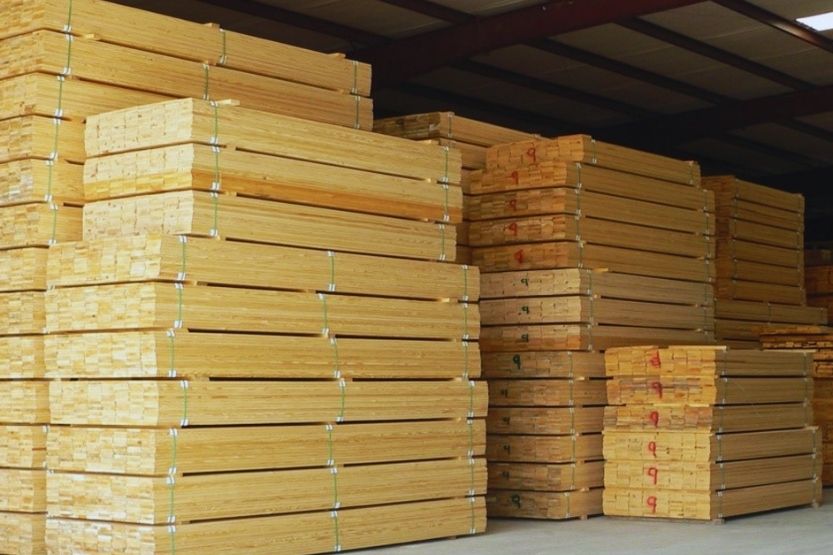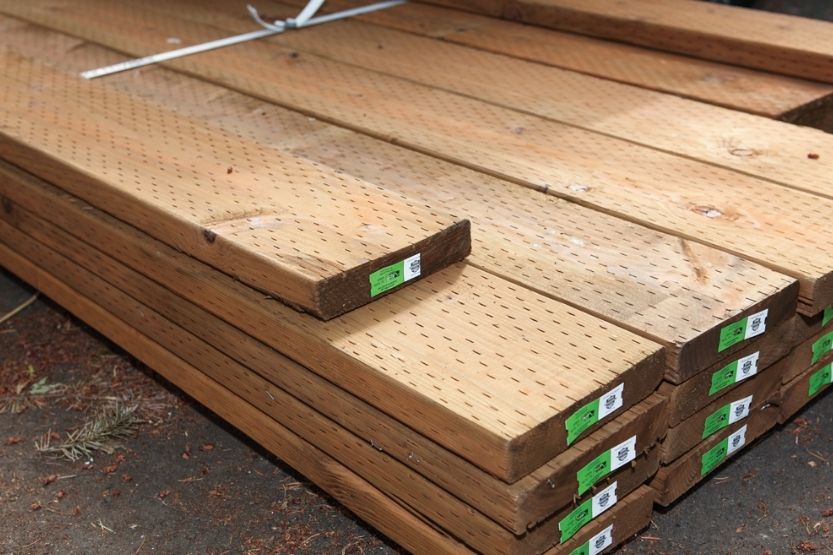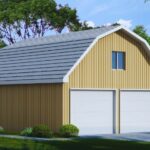If you’re working on a craft project or making a home improvement, you’d generally buy some lumber. Typically, it is either hardwood or softwood. When you’re looking for the type of lumber to use, you may realize that the dimensions that wood is available in often aren’t the board’s actual dimensions. If you’re new to woodworking, one of the common questions you may be asking is, what is 5/4 lumber?
Wood is sold according to nominal measurements rather than actual measurements. Hardwoods and softwoods, in particular, come in different standards. A 5/4 board is a common pre-cut of lumber, but its thickness is 1.25 inches.
Read on to learn more about the 5/4 lumber, its actual size, uses, etc.
5/4 Lumber – What Is It?

You can buy wood according to nominal measurements instead of actual measurements. Hardwoods and softwoods, in particular, come in varying standards. A 5/4 board is a common pre-cut of lumber, but its thickness is 1.25 inches.
5/4 Lumber’s Thickness
Softwoods can be bought in more conventional dimensions. But hardwoods usually aren’t. Instead, suppliers normally sell hardwoods by the board foot. It is a volume unit that is equivalent to about 144 cubic inches.
However, hardwoods are also available in quarters, with a thickness of ¼ inch equal to one quarter. As for how thick 5/4 lumber is, this would make it one ¼ inch thick.
Measure the Hardwood Board’s Thickness Before Surfacing
Professionals recommend measuring the hardwood board’s thickness before surfacing. You’ll need to account for this when you work on your project since you’ll lose a bit of thickness after planning.
Concerning how thick 5/4 lumber is, you’ll typically wind up with a finished board thickness of 1.063 inches.
How Do You Say 5/4 Lumber?
Several terms refer to 5/4 lumber. The terms can vary depending on the location or even by profession. This is because certain fields will use different terminologies according to what they are accustomed to. Nonetheless, 5/4 lumber is generally referred to as the following:
- Five-Fourths Lumber
- Five-Quarters Lumber
Both are universally considered the proper term and are interchangeable. Even if you mention one of these terms to someone who uses the other, they will still understand what you are referring to.
How Far Can a 5/4 Deck Board Span?
A decking board spans from joist to joist. If you are using 5/4 decking boards, the joists should not be apart further than 16 inches. Decks made of 2 x 4s or 2 x 6s boards can span up to 24 inches. If the decking runs at an angle, the joists may need to be placed closer together.
What Is the Quarter System?
A Quarter Refers to the Rough-sawn Lumber’s Thickness
The quarter system may seem confusing to a newcomer. But if you study it a bit closer, it will become easier to comprehend. A quarter refers to how thick rough-sawn lumber is when measured in increments of ¼ inches.
Read as Several Quarters
Rather than being read as a fraction, it is read as several quarters. 5/4 is equivalent to five quarters, 4/4 is equal to four quarters, etc.
Thickness
The thickness of a 5/4 board is 1¼ inches since it is five quarters. Then, the thickness of a 4/4 board is 1 inch because it is four quarters. A 12/4 board’s thickness would be 3 inches, and so on.
Typically Used in Measuring the Rough Stock
Bear in mind that quarters are typically only used in measuring the rough stock. After the boards are surfaced, the actual thickness measurements are generally used.
If a board were 6/4 while it was still rough, it would be referred to as 1½-inch after it surfaced. This is assuming that the standard ¼-inch of material was lost during surfacing.
Jargon That Professionals Use
The quarter system is generally the terminology or jargon that professionals use. Most lumber suppliers will make use of the quarter system. But a simpler system may be used at big box home centers.
What Is 5/4 Lumber Used For?

Hardwood Is a Favored Material Due to Its Appearance and Durability
Hardwoods may be used for various projects, such as furniture, musical instruments, boats, and home flooring. Hardwood is a favored material because of its appearance and durability. In addition, different species of hardwood lend themselves well to specific projects.
5/4 Boards for Decking
As far as projects involving 5/4 boards are concerned, decking is among the most popular. Most decks built in North America are made with 5/4 boards. This is because it is typically economical and is an easy material to work with.
An Environmentally-friendly Option
Also, hardware is an environmentally-friendly option. To illustrate, between two decks of similar sizes, let’s say one is built using 5/4 boards. Then, the other one is built using 2 x 6 boards. It would take a fewer number of trees cut down to get the same amount of wood used for the 5/4 board deck.
5/4 Mahogany Boards Are Extremely Durable Option for Decks
Moisture, bugs, and the elements can wreak considerable damage on a deck. This is why people prefer to use particular types of wood in building them. Among the most common types of hardwood lumber used in deck building are 5/4 mahogany boards.
Mahogany is extremely durable. It has a natural resistance to warping and is resilient against damage wrought by insects. Although this hardwood type tends to be a bit pricey, a mahogany deck is likely to endure for many decades.
Types of Wood for Furniture [3 Main Types]
What Size of Lumber Is Used for Decking?
You may use lumber measuring 2 x 4, 2 x 6, or 5/4 x 6 inches for the deck’s surface. Available in cedar and pressure-treated fir, the 5/4 decking has a thickness of 1 inch and a width of 5 ½ inches.
It features rounded edges, which give it a splinter-free surface. The cedar 1x lumber typically has a rough side and a smooth side.
Again, what is the actual size of 5/4 lumber? A 5/4 lumber is common pre-cut lumber that is 1 1/4 or 1.25 inches thick when rough sawn and 1.063 inches thick when planed.
What Types of Lumber Are Used in Decking?
The type of lumber used in deck building typically falls under two categories. They are the following:
- Pressure Treated Deck Lumber
- Naturally Resistant Deck Lumber
Let’s briefly discuss these two types of lumber:
1. Pressure Treated Deck Lumber
Usually made of pine or fir, pressure-treated lumber (PT) is infused with chemicals that make it highly resistant to rot. These chemicals also provide the wood with a green or brown cast. It can be hidden with paint or stain or allowed to weather into a dark gray.
Pressure-treated lumber isn’t costly. But you’ll have to make sure that the stock you choose is straight and doesn’t have any loose knots.
2. Naturally Resistant Deck Lumber
Softwood species such as cedar, cypress, and redwood are naturally resistant to rot and insects. This characteristic most embodies the dense, centermost core of a tree, the heartwood.
These woods can be sealed or stained to preserve their natural beauty or allow them to weather assorted shades of gray. Exotic hardwood species like cambara, meranti, and ipe exhibit similar color features and are usually more durable. However, they are harder to work with and more expensive.
What Is S4S?
Hardwood and Softwood Lumbers Available in Home Centers
Surfaced Four Sides (S4S) are hardwood and softwood lumbers typically sold by home centers or lumberyards. They are made using a process wherein the material has all four sides milled away to a particular size.
Sold by the Linear Foot
S4S boards are sold by the linear (running) foot. When a board is sold as 1 x 6 inches, its true measure is ¾ inches x 5 ½ inches.
The boards’ price covers the milled materials and the cost of labor. Conversely, at a lumber dealer that sells by the board foot, not all lumber is milled in the same way. So you may wind up getting more of the wood you are buying.
Different Quality
When you buy lumber by the board foot, the quality of the boards may be in any of the milled stages. Some boards may be entirely rough as they were coming from the sawmill.
Lumber Sold by the BoardFoot Is Cheaper Than S4S Lumber
At the same time, others may have a single straight, milled edge and are surfaced on two sides (S2S) to be typically thicker than the normal finished thickness. But despite how much milling may have been done, lumber sold by the board foot is much cheaper than S4S lumber.
What Does 4/4, 5/4, and 6/4 Mean?

Hardwood lumber’s thickness is measured by quarters of an inch. Hence, 4/4 (four-quarters) lumber thickness would be 1 inch before surfacing. This is the number used in calculating board feet.
Such thickness is also what you will pay for. But the thickness after planing may only be ¾ inches.
Summary of the Hardwood Lumber’s Thickness Before and After Planing
The chart below illustrates the typical thickness of hardwood lumber before and after planing:
| Quarters | Thickness (Rough Sawn) | Thickness (Planed) |
| 4/4 | 1″ | 13/16″ ¾” |
| 5/4 | 1 ¼” | 1 1/16″ |
| 6/4 | 1 ½” | 1 ¼” |
| 8/4 | 2″ | 1 ¾” |
| 12/4 | 3″ | 2 ¾” |
| 16/4 | 4″ | 3 ¾” |
- 4/4 (four-quarter) Lumber: 1-inch thick when it is rough sawn. It is typically finished at 13/16 inches thick after planing.
- 5/4 (five-quarter) Lumber: 1.25 inches thick when rough sawn. It is typically finished at 1.063″ thick after planing.
- 6/4 (six-quarter) Lumber: 1.5 inches thick when rough sawn. It is generally finished at 1.25 inches thick after planing.
- 8/4 (eight-quarter) Lumber: 2 inches thick when rough sawn. It is generally finished at 1.75 inches thick after planing.
- 12/4 (twelve-quarter) Lumber is 3 inches thick when rough sawn. It is generally finished at 2.75 inches thick after planing.
- 16/4 (sixteen-quarter) Lumber is 4 inches thick when rough sawn. It is generally finished at 3.75 inches thick after planing.
Frequently Asked Questions – 5/4 Lumber
What Lumber Is Best for Decking Frame?
Pressure-treated lumber is generally among the best types of lumber to use for decking frames because of its cheap cost. Softwoods like redwood and cedar also make good framing choices, especially if you want a safer and more sustainable option.
What Are the Four Types of Lumber for Woodworking?
Hardwood, softwood, plywood, and MDF (medium-density fiberboard) are the four primary types of wood. You can use them for any woodworking project.
What Is a Board Foot?
A board foot is the unit of measurement equal to the thickness of the board multiplied by its width. Then, multiply by its length, and then divide by 12.
For instance, a board that is 1-inch thick, 4 inches wide, and 3 feet long equals one board foot (bf).
1 x 4″ x 3′ / 12 = 1 bf
How Are Board Feet Calculated?
Board feet for domestic lumber can be calculated either in inches or in feet. You can use one of the following two formulas for calculating board feet. It is a standard industry practice to round up the total to a foot’s nearest quarter. For example, 3.8 bf will become four bf.
- T” x w” x L” 1” x 6” x 96”
- 144 = X board feet 144 = 4 bf
- T” x w” x L” 1” x 6” x 8’
- 12 = X board feet 12 = 4 bf
T = thickness, W = width, L = length, bf = board feet
The standard measurement for exotic lumber is by inch (length only). It is calculated to two decimal places.
Conclusion – 5/4 Lumber
You can buy wood according to nominal measurements instead of actual measurements. Hardwoods and softwoods, in particular, come in varying standards. A 5/4 board is a common pre-cut of lumber, but its thickness is 1.25 inches.
An amateur woodworker can easily get overwhelmed by all the terms and measurements involved in their chosen craft. But once you know what 5/4 lumber is and better understand the quarter system, you won’t feel like you’re lost in the woods while browsing for lumber.
Read next:



![Read more about the article Milwaukee M12 Vs M18 [What Is the Difference Between Them?]](https://homecarezen.com/wp-content/uploads/2022/01/Milwaukee-m12-vs-m18-300x200.jpg)
